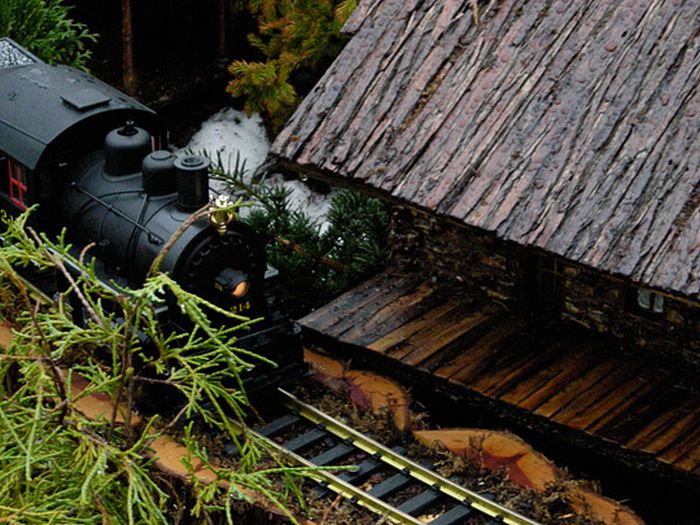|
|
Railway Modelling
|
The size of engines depends on the scale and can vary from 700 mm (27.6 in) tall for the largest ridable live steam scales such as 1:8, down to matchbox size for the smallest in Z-scale (1:220). However, there is another scale that was introduced in 2007 that is also commercially available, called T Gauge, it is 3 mm (0.118 in) gauge track and is a scale of 1:450, basically half the size of Z scale. A typical HO (1:87) engine is 50 mm (1.97 in) tall, and 100 to 300 mm (3.94 to 11.81 in) long. The most popular scales are: G gauge, Gauge 1, O gauge, S scale, HO gauge (in Britain, the similar OO), TT scale, and N scale (1:160 in the United States, but 1:144 in the UK). There is growing interest in Z scale and T Gauge. HO and OO are the most popular. Popular narrow-gauge scales include Sn3, HOn3 Scale and Nn3, which are the same in scale as S, HO and N except with a narrower spacing between the tracks (in these examples, a scale 3 ft (914 mm) instead of the 4 ft 8 1⁄2 in (1,435 mm) standard gauge).
The largest common scale is 1:8, with 1:4 sometimes used for park rides. G scale (Garden, 1:24 scale) is most popular for backyard modelling. It is easier to fit a G scale model into a garden and keep scenery proportional to the trains. Gauge 1 and Gauge 3 are also popular for gardens. O, S, HO, and N gauge are more often used indoors. Lionel trains in O scale (1:48 scale) are popular toys. S refers to 1:64 scale.
The words scale and gauge seem at first interchangeable but their meanings are different. Scale is the model's measurement as a proportion to the original, while gauge is the measurement between the rails.
At first, model railways were not to scale. Manufacturers and hobbyists soon arrived at de facto standards for interchangeability, such as gauge, but trains were only a rough approximation to the real thing (Normen Europäischer Modelleisenbahnen (NEM) and NMRA). Official scales for the gauges were drawn up but not at first rigidly followed and not necessarily correctly proportioned for the gauge chosen. O (zero) gauge trains, for instance, operate on track too widely spaced in the United States as the scale is accepted as 1:48 whereas in Britain O gauge uses a ratio of 43.5:1 or 7 mm/1 foot and the gauge is near to correct. British OO standards operate on track significantly too narrow. The 4 mm/1 foot scale on a 16.5 mm (0.650 in) gauge corresponds to a track gauge of 4 ft 1 1⁄2 in/1,257 mm, 7 inches / 178 millimetres undersized). 16.5 mm (0.650 in) gauge corresponds to 4 ft 8 1⁄2 in (1,435 mm) standard gauge in HO (half-O) 3.5 mm/1 foot or 1:87. This arose due to British locomotives and rolling stock being smaller than those found elsewhere, leading to an increase in scale to enable HO scale mechanisms to be used. Most commercial scales have standards that include wheel flanges that are too deep, wheel treads that are too wide, and rail tracks that are too large.
|
|









